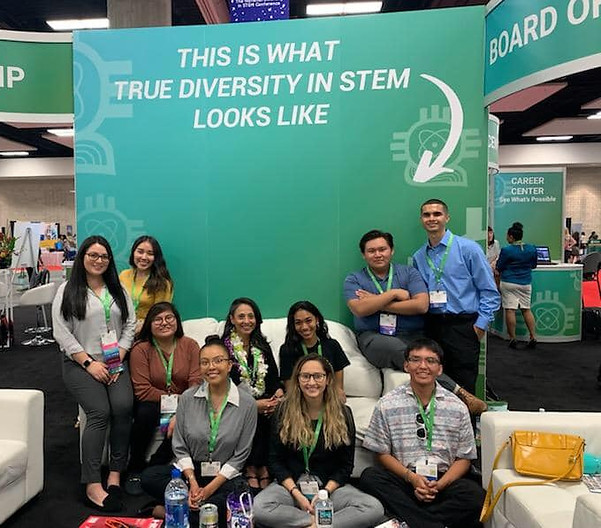

Who I am
Hello! I am currently a first-gen graduate student and RISE fellow at Northern Arizona University working on my Masters in Biology. I recieved my bachelors degree in biomedical science with a minor in chemistry from Northern Arizona University. My PI is Dr. Naomi Lee and I am currently working on my project titled "Using self-assembling peptides (Q11 and KFE8) as a platform to create new HPV vaccine candidates" that I started as an undergrad. Both my research and I are funded by the NIH. I attended the Society for Advancement of Chicanos/Hispanics and Native Americans in Science conference (SACNAS) in 2019 and presented my research at the Southwest Regional ACS conference (2019) and the virtual SACNAS conference (2020). Coming from Phoenix, AZ, it is nice to live in the beautiful forest town of Flagstaff. I have quickly become a fan of hiking and taking in the magnificent nature views here. Once I am done here in Flagstaff, I am excited where my career will take me. After I finish my masters I plan to pursue a PhD in cancer biology or cellular biology and hopefully work in industry research.


My Project
Self- assembling proteins commonly occur in nature and have shown to have potential as a vaccine platform with displayed peptide antigens. Beta-strand peptides that alternate hydrophobic and hydrophilic amino acids self-assemble into a beta-sheet bilayer. This format could cause an immunogenic response and therefore be an effective vaccine for HPV. Current HPV vaccines are virus-like proteins which are not as robust or as easily stored as the peptides. In addition, current HPV vaccines do not protect against all types of HPV. The goal is to be creating Q11 (Ac-QQKFQFQFEQQ-NH2) peptide sequences so that HPV antigens and PADRE will be added on in a linear fashion and it is theorized that it will cause an immune system response with T cells. Standard Fmoc solid phase peptide synthesis will be utilized to synthesize all peptides. The Q11 and HPV peptides will be co-assembled followed by chemical conjugation of the PADRE sequence. The project was started in January 2019. Thus, results consist of peptide synthesis, HPLC purification, MALDI-TOF and CD spectroscopy, and TEM imaging. TEM will be used to characterize fibril morphology which will be followed by animal studies. The animal models will be used to test the immunogenicity and effectiveness of the vaccine. Mice will be injected with cancer-causing HPV types after one month of being vaccinated and results will be assessed using ELISA assays. In conclusion, self-assembling peptides with multivalent display of antigens could be an efficient way to not only make next generation HPV vaccines but vaccines for other diseases as well.
There are over 150 types of HPV and many can cause cancer
HPV is the most common STD in the US
HPV can affect both men and women
Native Americans are disporpotionally affected by HPV

Awards and Recognition
+ Graduate Student of the Month (October 2020)
+ LumberJack Scholarship
